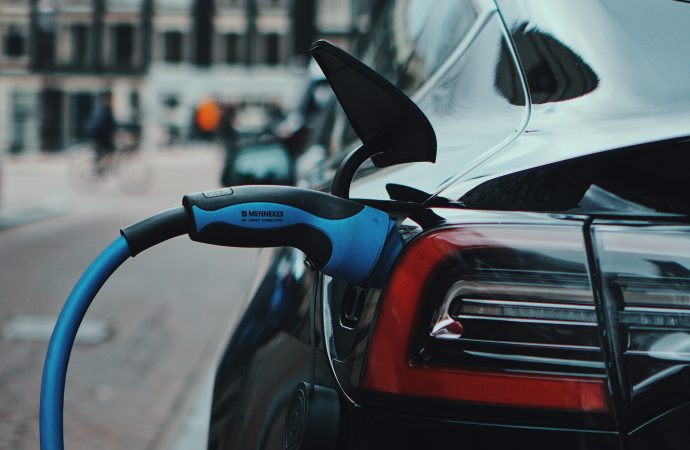Electric cars have been touted as the ultimate solution to our transportation woes, promising zero emissions and a cleaner future. And with self-driving technology rapidly advancing, it seems that these cars will soon become commonplace on our roads. But before we get too excited about the prospect of guilt-free driving, we need to take a
Electric cars have been touted as the ultimate solution to our transportation woes, promising zero emissions and a cleaner future. And with self-driving technology rapidly advancing, it seems that these cars will soon become commonplace on our roads. But before we get too excited about the prospect of guilt-free driving, we need to take a closer look at the hidden costs of self-driving electric cars. From manufacturing and disposal to infrastructure and energy consumption, there are many factors that could offset their environmental benefits. In this blog post, we’ll explore some of these hidden costs and ask whether self-driving electric cars are really as green as they seem.
The Advantages of Self-Driving Electric Cars
Self-driving electric cars have a number of advantages over conventional vehicles. They are much more environmentally friendly, since they do not produce emissions. They also require less maintenance and are safer than traditional vehicles. Finally, they are cheaper to operate. All these factors make self-driving electric cars an attractive option for consumers.
The Disadvantages of Self-Driving Electric Cars
There are several disadvantages to self-driving electric cars. First, these cars need to be constantly monitored and serviced. This is because the battery pack is a vulnerable component that can be damaged by human error or weather. Second, self-driving electric cars will require more resources than traditional gasoline-powered cars. This includes more energy storage capacity, processing power, and software development expertise. Third, self-driving electric cars may not be cost effective in the long term. This is because they will require significantly higher investment than traditional gasoline-powered vehicles to achieve widespread adoption. Finally, self-driving electric cars may not be environmentally sustainable in the long term due to their high resource demands.
The Costs of Self-Driving Electric Cars
As the world moves closer and closer to a future where self-driving electric cars are the norm, it’s important to remember that this technology comes with its own set of costs.
Self-driving electric cars are not without their risks – they could be hacked, for instance, or suffer from software glitches. They also require a lot more energy than traditional models, which means that they’ll need to be charged up regularly.
In fact, one study found that self-driving electric cars could actually be more expensive than traditional ones over the long run. Not only do they require more energy to operate, but they also tend to wear down faster, which means that replacements will be needed sooner.
This doesn’t even take into account the environmental costs of self-driving electric cars. The Guardian reports that each autonomous car represents a “significant increase” in CO2 emissions – and when you add in all the other vehicles on the road, it’s clear that this technology isn’t exactly Earth-friendly.
The Future of Self-Driiving Electric Cars
There are plenty of people who believe that self-driving electric cars are the future. After all, they’re the perfect solution for reducing emissions and making our roads more efficient. But, before we can get there, we need to understand some of the hidden costs of self-driving electric cars.
The biggest cost associated with self-driving electric cars is safety. When you put all of those human beings behind the wheel, accidents happen. Self-driving cars won’t be immune to this problem, and in fact, they may even be more likely to cause accidents because they are unable to react as quickly. This means that we will need to continue investing in road safety infrastructure – something that will cost billions of dollars over the long term.
Another cost associated with self-driving electric cars is our energy infrastructure. If we’re going to rely on autonomous vehicles to carry us around, we’ll need a reliable and plentiful source of electricity. Right now, this isn’t really an issue since most autonomous vehicles use sensors and motors that draw very little power. However, as these vehicles become more advanced and rely on new technologies (like artificial intelligence), their power demands will grow exponentially. We may soon find ourselves struggling to keep up with demand if we want self-driving electric cars to become a reality.
Ultimately, there are countless costs associated with self-driving electric cars – both explicit (like road safety) and implicit (like
Conclusion
As self-driving electric cars gain popularity, it is important to consider the hidden costs of this technology. While many benefits exist from transitioning to an all-electric fleet, there are also a number of costs that need to be weighed before making any decisions. From the environmental impact of extracting and refining new fuels, to the cost of installing charging infrastructure, it is important to understand the full picture before making a decision. As with any technology or policy change, there are pros and cons that should be considered before moving forward.

















Leave a Comment
Your email address will not be published. Required fields are marked with *